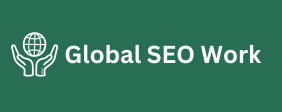Plus it’s not just about quantity, it’s the quality of leads that matter. What a business really needs is high-intent leads that have an interest in their company, product, or service and which can be persuade to convert through nurturing. So how can you do that?
In this comprehensive blog, we will cover:
What is a lead?
A lead is a contact that comes to a business through an action such as a query, download, or form submission.
For example, let’s say you have an insurance business. A potential customer on your website who wants to get a quote for home fax list insurance will be prompte to fill out a form that includes their name and email address. This action makes the person a lead in your business and can be passe to the sales department for action (e.g. a sales call or email).
There are four types of leads to consider.
- A marketing qualifie lead (MQL) is a prospect who has engage with marketing activities but is not ready to be sent to the sales department. This type of lead could be an ebook download on your site.
- A sales qualifie lead (SQL) is one that has shown interest in becoming a customer and can be passed on to the sales department for nurturing. An example is someone who had submitted an email or request for more information or to talk.
- A product qualifie lead (PQL) is a lead who has used your product or service and may be ready to become a customer. An example of this type of lead is someone who has had a free trial.
- A service qualifie lead (SQL) is someone who has used a service and has taken an action to show they want to become a customer. For example, this could be someone who wants to upgrade a subscription.
Not all leads are created equal! You need to treat each lead differently depending on the action they took and the lifecycle stage that they are in.
What is lead generation?
Lead generation is a process of attracting prospects to your business with the aim of nurturing them and converting them into a customer.
You can use both inbound marketing and writing medical articles: secrets of success in the medical content creation outbound marketing to generate leads. The approach you choose depends on the business content marketing: attract leads and win customers! and the audience you’re looking to engage.
The aim of inbound marketing is to attract prospects to your product or service. Content marketing can be the most effective approach here, through using blogs, ebooks, social media posts, webinars, while ensuring your content includes keywords through search engine optimization (SEO).
Outbound marketing is when you reach out to potential customers.
The approach you use will determine the type of content you create and the resources you put towards activities. A lot of companies use both approaches so it’s worth thinking about how a combination of inbound and outbound can help you boost lead generation.
Why is lead generation important?
Even if a company has a large and loyal customer base, it needs to generate leads to flourish and grow.
The fact is that a large percentage of leads will not convert into sales.
This can make lead generation an sms to data expensive business. According to research by First Page Sage, the average organic cost per lead across industries is $409.07.
So it’s important to generate leads all the time to keep people moving through the funnel to eventually convert. By tagging and segmenting leads you can put the work require into those that are most likely to convert.
In addition, by being proactive in lead generation you are also promoting your business and raising brand awareness.
